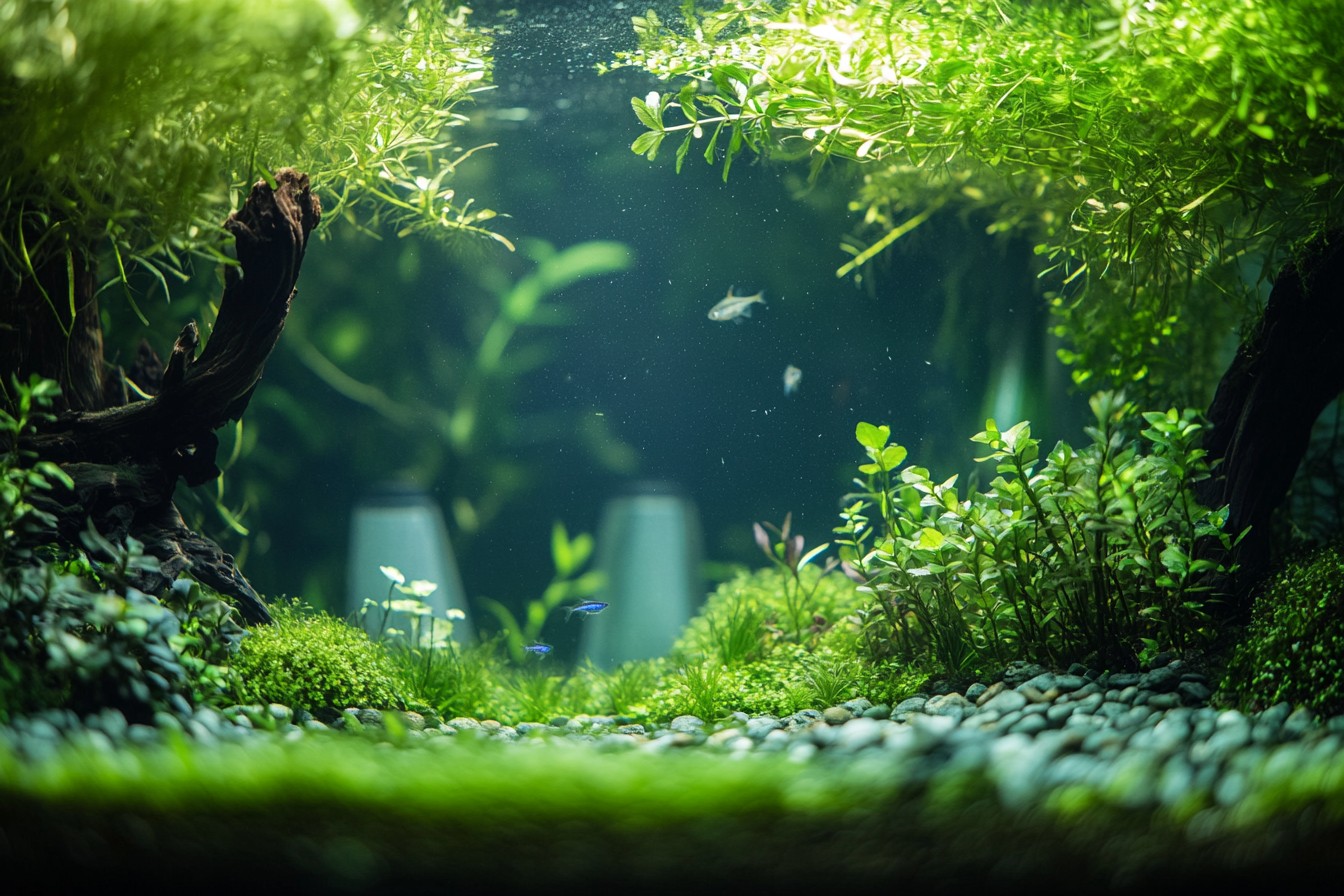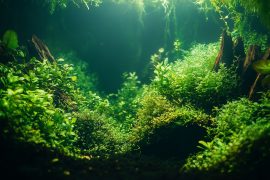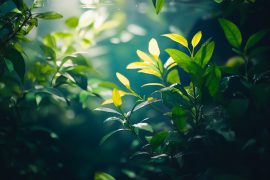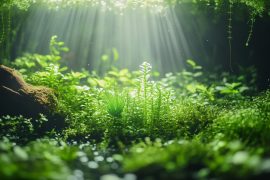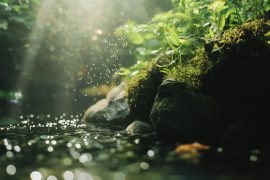I remember the first time I saw Takashi Amano’s Nature Aquarium World book. I was twenty-two, working weekend shifts at a local fish store to supplement my aquarium habit, when a customer left it behind on the counter. Flipping through those pages changed everything I thought I knew about aquariums.
These weren’t fish tanks—they were underwater landscapes, perfect miniature worlds that made my carefully arranged plastic plants and blue gravel look like a child’s crayon drawing next to a Monet. I bought my own copy that night, spending what was essentially my food budget for the week. I ate ramen for six days straight and didn’t regret it for a second.
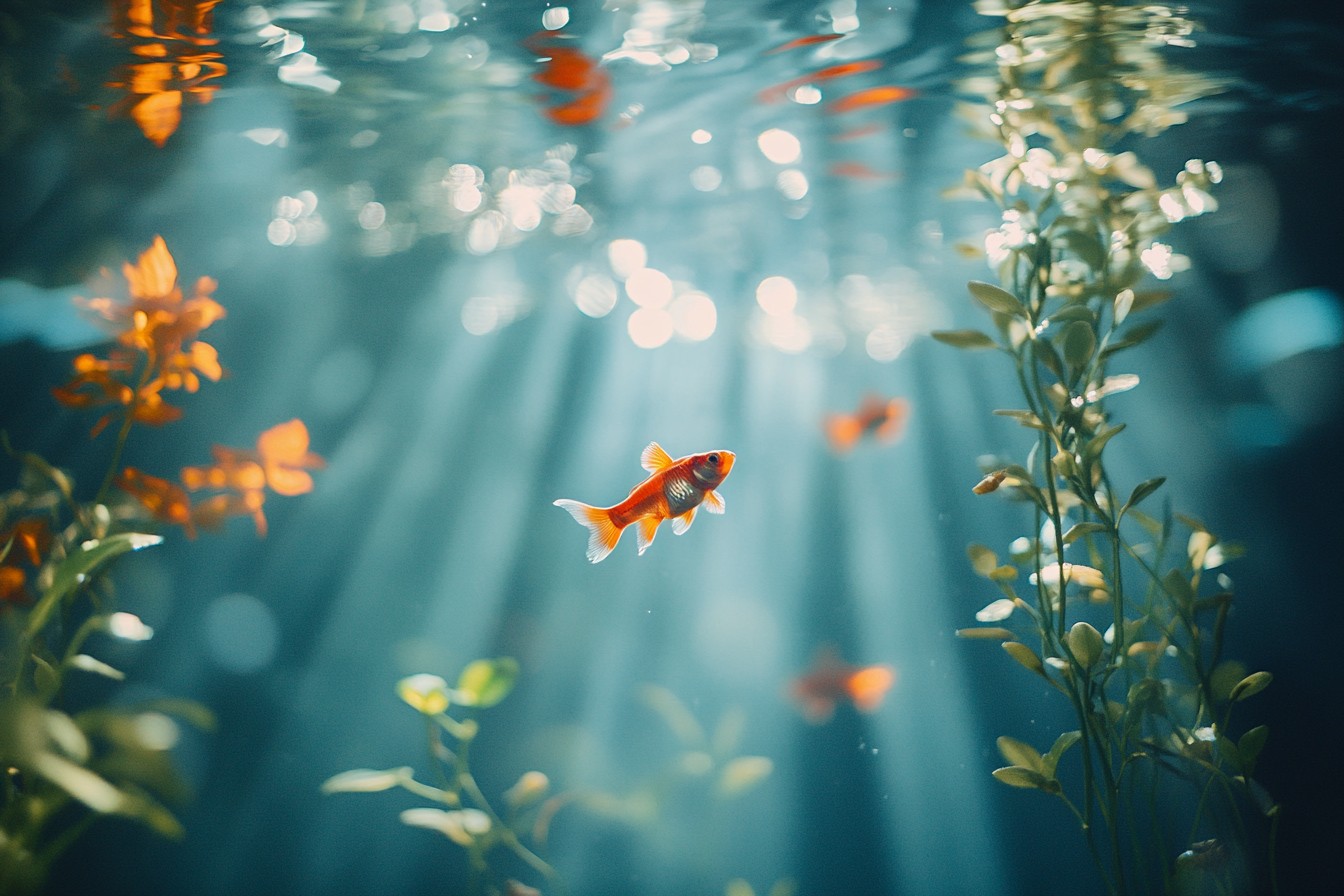
Meeting the masters who shaped this art form hasn’t always gone smoothly. At my first international aquascaping event, I spotted Amano himself demonstrating techniques to a small crowd. I hovered at the edges, too starstruck to approach, until a well-meaning colleague literally pushed me forward, causing me to stumble directly into Amano’s carefully arranged tools.
I knocked a $300 pair of specialized scissors into a bucket of water, where they promptly disappeared among the plant cuttings. The great master simply smiled, fished them out, handed them to me to dry, and asked if I had questions about the iwagumi layout he was creating. I stammered something incomprehensible about plant placement, my face burning with embarrassment.
He nodded thoughtfully, as if I’d said something profound, and showed me how he was using negative space to create depth in the relatively shallow tank. That moment of kindness from someone I so deeply admired stayed with me, informing how I later interacted with nervous beginners at my own workshops. Over the years, I’ve had the privilege of learning from several masters of the craft, each with distinctive approaches that have influenced my own style.
Joshua Sim’s dramatic hardscapes taught me to embrace bold negative space instead of filling every inch with plants. Luis Navarro’s dutch-style layouts showed me the importance of contrasting leaf textures in creating visual interest. Dave Chow’s paludariums expanded my concept of what an aquascape could be, extending beyond the water’s surface into the realm of terrestrial plants.
What fascinates me about these masters isn’t just their technical skill but their unique creative visions. Amano’s naturalistic approach, inspired by Japanese gardening principles, stands in stark contrast to Marcel Dykierek’s almost architectural compositions with their precise geometric elements. Jeff Senske’s vibrant, color-focused layouts couldn’t be more different from James Findley’s moody, atmospheric scapes that often evoke specific natural locations.
Yet all are recognized masters of the same craft. I once spent three hours watching Oliver Knott create a layout in real-time at a European exhibition. What struck me wasn’t just his technical precision but the intuitive way he worked—adding stone, stepping back, tilting his head, removing the stone, trying a slightly different angle.
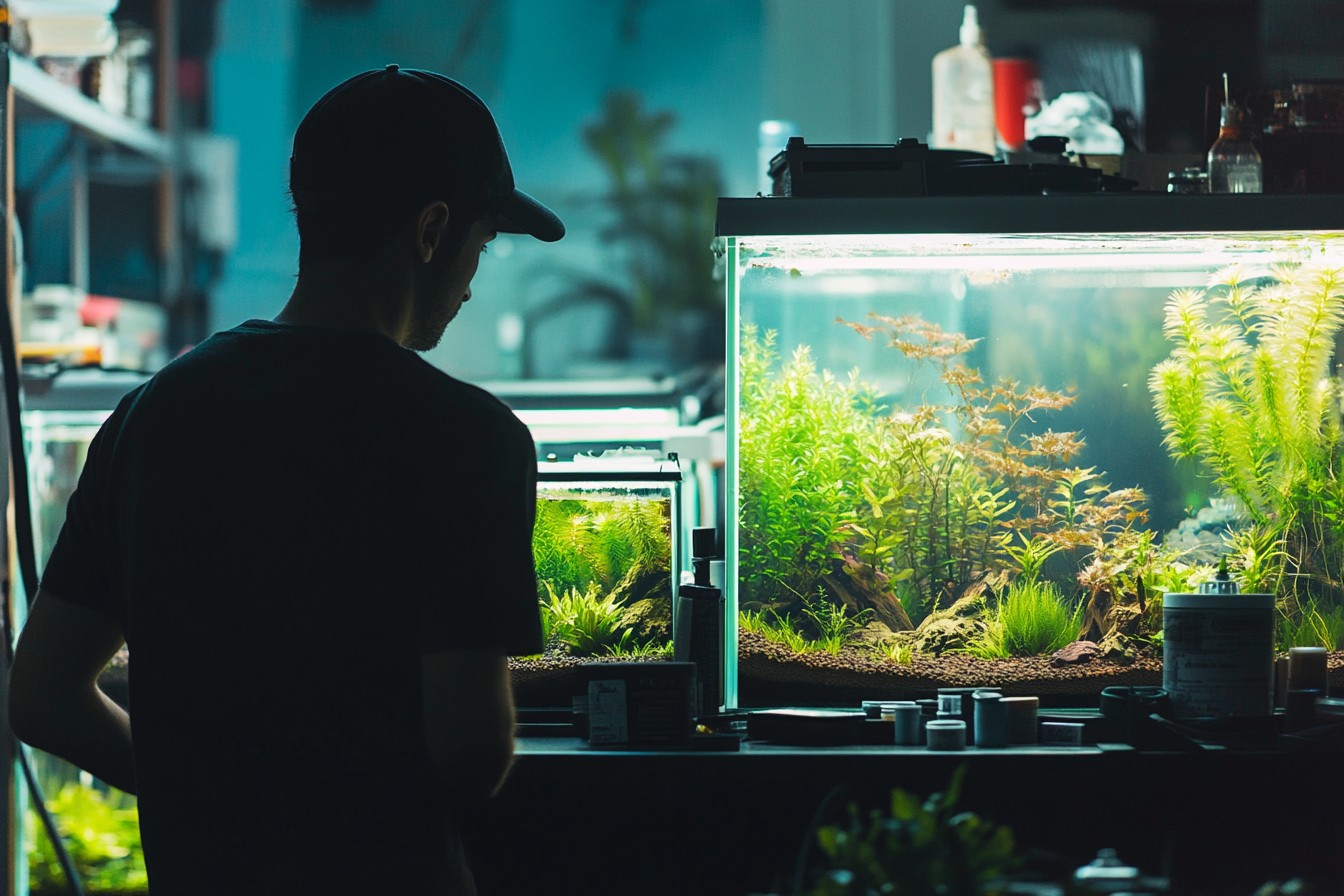
Professional musicians talk about how greatness comes from knowing which notes not to play; watching Knott taught me that aquascaping mastery comes equally from knowing what to remove. The final layout featured just seven stones and three plant species, yet created the convincing illusion of a vast mountain range seen from a distance. My own meeting with Oliver a year later didn’t go quite as planned.
I’d brought photographs of my latest project to get his feedback at a small gathering after an aquascaping demonstration. He looked through them carefully, paused at one image of what I considered my masterpiece, and said, “This would be perfect if you removed about half of what’s in there.” I was initially crushed—I’d spent months on that layout. But he was absolutely right.
The next weekend, I tore down and rebuilt the tank with half the hardscape material and fewer plant species. The result was infinitely stronger, with a clarity of concept the original lacked entirely. The paths these masters took to prominence reveal an important truth about this art form—there’s no single entry point.
Amano began as a nature photographer, bringing his eye for natural compositions to the aquarium. George Farmer came from a military background, perhaps explaining his precision and methodical approach. Mike Senske entered through the aquarium retail business.
Some were artists first, others scientists, still others entrepreneurs who fell in love with the creative aspects of the craft. This diversity extends to their working methods too. I’ve had the opportunity to observe several masters during workshop demonstrations, and their approaches vary dramatically.
Dave Chow works in near silence, completely absorbed in the process, rarely looking up or acknowledging the audience until the piece is complete. In contrast, Luis Navarro narrates his every decision, explaining the reason behind each plant placement and hardscape arrangement, turning the creation into an educational experience. Neither approach is superior—they simply reflect different personalities expressing themselves through the same medium.
What truly separates masters from skilled hobbyists, though, isn’t just their finished product—it’s their problem-solving abilities. I watched Jeff Senske rescue what seemed like a doomed demonstration when the pre-ordered driftwood pieces turned out to be completely different from what he’d requested. Rather than panic or make excuses, he immediately reimagined the entire concept, creating something completely different but equally impressive from the materials at hand.
That level of adaptability comes only from years of experience and a deep understanding of fundamental principles. Critics sometimes dismiss aquascaping as merely decorative, but the best practitioners integrate science and art seamlessly. When I interviewed Josh Sim about his approach to layout design, he spoke as much about nitrogen cycling and oxygen exchange as he did about golden ratios and focal points.
His understanding of plant physiology informed every aesthetic choice, ensuring his breathtaking compositions were also functional, sustainable ecosystems where fish would thrive, not just look pretty. The late Takashi Amano perhaps embodied this integration most completely. His nature aquarium philosophy wasn’t just about mimicking natural scenes but about creating self-sustaining ecosystems where every element—from the tiniest microorganisms to the showcase fish—played a role in maintaining balance.
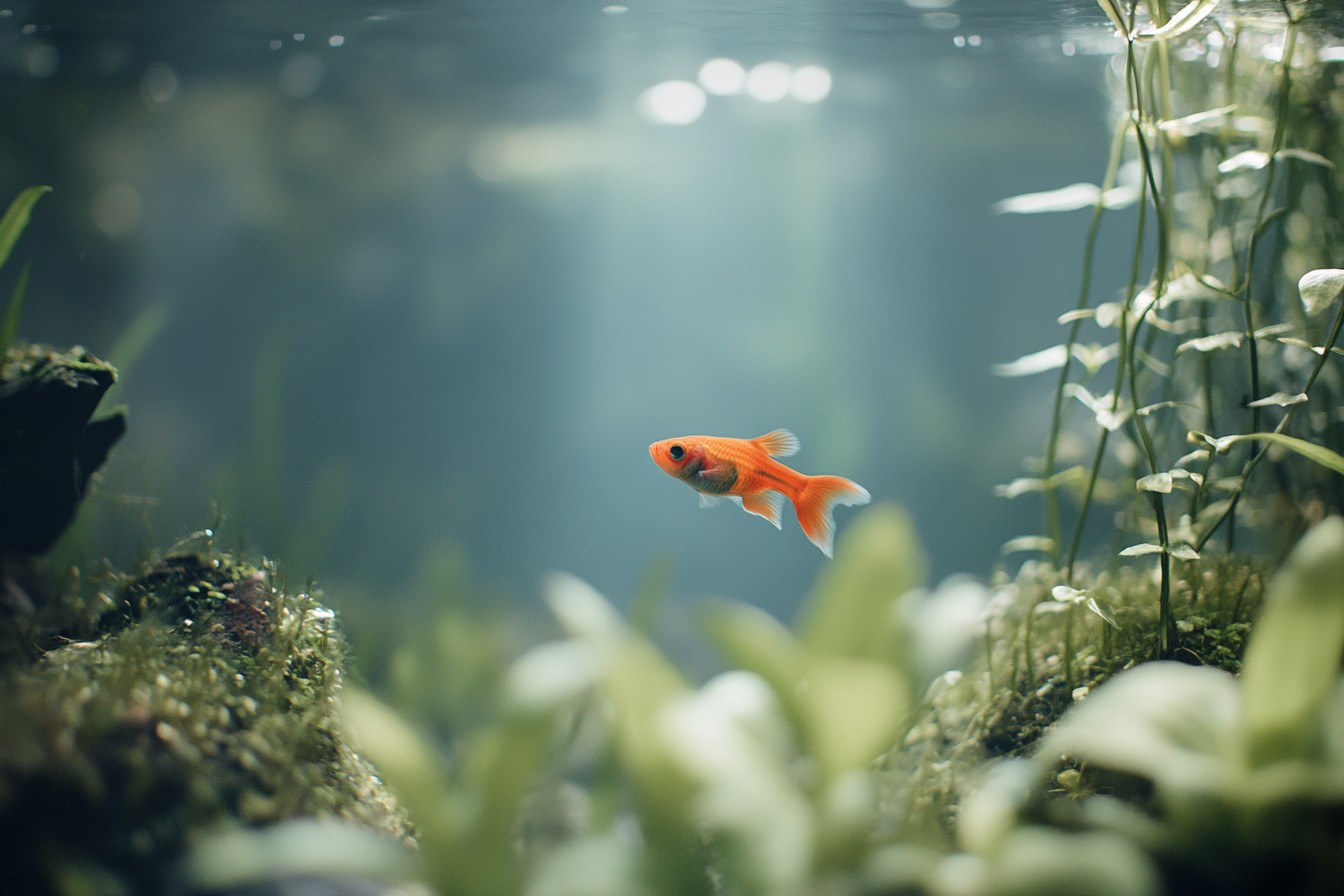
His largest projects, like the massive 40-foot nature aquarium in Lisbon, aren’t just visually stunning but engineering marvels, pushing the boundaries of what’s biologically possible in a closed system. The tools these masters use often become extensions of themselves, customized and personalized through years of use. I once watched in fascination as Mike Senske unpacked his tool kit before a demonstration—scissors with handles wrapped in colorful tape for quick identification, tweezers of varying lengths filed to different tip shapes for specific tasks, measurement tools modified for underwater use.
When I asked about a particularly unusual curved tool, he laughed and explained it had started life as a dental instrument that he’d modified for reaching difficult planting spots. These personal innovations reflect the constant problem-solving that characterizes mastery. What I find most inspiring about these aquascaping legends isn’t their finished creations but their willingness to continue evolving.
Even Amano, at the height of his fame, continued to experiment with new techniques and approaches. In one of his last interviews before his untimely death, he spoke about reevaluating his entire approach to planted tanks, considering new ways to achieve natural harmony that he hadn’t explored in his decades-long career. That humility and curiosity define true mastery more than any specific technique or style.
Their influence extends beyond aesthetics into the very culture of the hobby. Before Amano popularized nature aquariums, most planted tanks were utilitarian collections of specimens with little thought given to artistic composition. Josh Sim helped elevate aquascaping competitions to legitimate art events covered by mainstream media.
Luis Navarro’s educational initiatives have made advanced techniques accessible to beginners, dramatically accelerating their progress. I’ve been fortunate to host several master aquascapers for workshops at conventions, and what consistently impresses me is their generosity with knowledge. Despite having spent years developing their techniques, most share their methods openly, viewing the advancement of the art form as more important than maintaining personal competitive advantages.
This collaborative spirit has accelerated the evolution of aquascaping in ways that would be impossible in a more secretive community. My most humbling experience came when I was invited to judge a competition alongside several of these masters. Comparing their evaluation process to my own revealed the tremendous gap between advanced hobbyist and true master.
Where I might assess a layout on perhaps a dozen criteria, they were simultaneously evaluating hundreds of subtle factors—the relationship between leaf sizes and hardscape texture, the long-term growth patterns of plant combinations, the psychological impact of negative space, the cultural references embedded in composition choices. It was like watching chess grandmasters see moves I couldn’t even imagine. What ultimately makes these aquascaping masters worth studying isn’t just their technical skill but their distinct creative voices.
When you’ve seen enough of their work, you can identify an Amano nature aquarium or a Farmer hardscape without needing to see the creator’s name. They’ve moved beyond competent execution into the realm of personal expression, using this unique art form to share their particular vision of beauty with the world. That’s the journey all artists aspire to complete—from imitation through competence to genuine self-expression.
The masters show us not just techniques to copy but possibilities to inspire our own creative paths.
